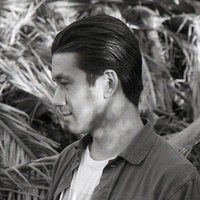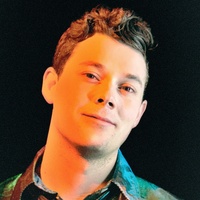On authenticity and community
Prelude
Poet, fiction writer, editor, and New Narrative theorist Robert Glück has served as director of San Francisco State University’s Poetry Center, co-director of the Small Press Traffic Literary Center, and associate editor at Lapis Press. He is the author of 11 books, including two novels, Margery Kempe and Jack the Modernist, and, most recently, Communal Nude: Collected Essays. In 2019, Margery Kempe will be republished by New York Review of Books Classics. Glück edited, with Camille Roy, Mary Burger, and Gail Scott, the anthology Biting The Error: Writers Explore Narrative. He lives “high on a hill” in San Francisco.
Conversation
On authenticity and community
Poet, fiction writer, editor, and ceramist Robert Glück on the shared qualities of his creative endeavors, coming up with your own answers to questions around appropriation and authenticity, and the value of being part of an evolving community.
As told to Sara Wintz, 1932 words.
Tags: Writing, Art, Process, Collaboration, First attempts, Sex, Multi-tasking.
In a conversation with Eric Sneathen at Open Space, you talked about studying ceramics at the College of Art in Edinburgh in 1966 and then with Peter Voulkos in Berkeley circa 1969. I also read, in your conversation with Miranda Mellis at The Believer, that you had a china collection when you were young. It sounds like you’ve always been interested in vessels and collecting; the marks that we make and disperse over the course of our lifetimes. How do your visual art and writing practices intersect? When is prose the same as pottery, and when are the two forms completely different?
It’s true. I came out of the egg with the desire to possess ceramic objects. But my house is full of obscure collections of all sorts, on top shelves of closets and tucked away in files and portfolios. Now that I’m making ceramics again, my urge to collect has decreased for some reason, though I wouldn’t say no to a Gertrud Vasegaard or a Wilhelm Kåge from his Farsta series. In general I have collected work from two early 20th century potteries, California Faience in Berkeley and Jalan in San Francisco. Jalan is less known—Manuel Jalanivich and Ingevardt Olsen, lovers I hope.
Sometimes spinning mud obsesses me—I close my eyes and feel it. I want evidence of spinning in the finished work. I also make rattles, which I think is appropriate for my time of life. One rattle series is called “Ghosts and Universes,” the other is called “Make-It-Stop.” I draw an excruciated face with hands covering ears, though the horrid noise doesn’t stop because it’s coming from inside. I don’t stray too far from domestic use. The magic is that they can be art as well as humble objects.
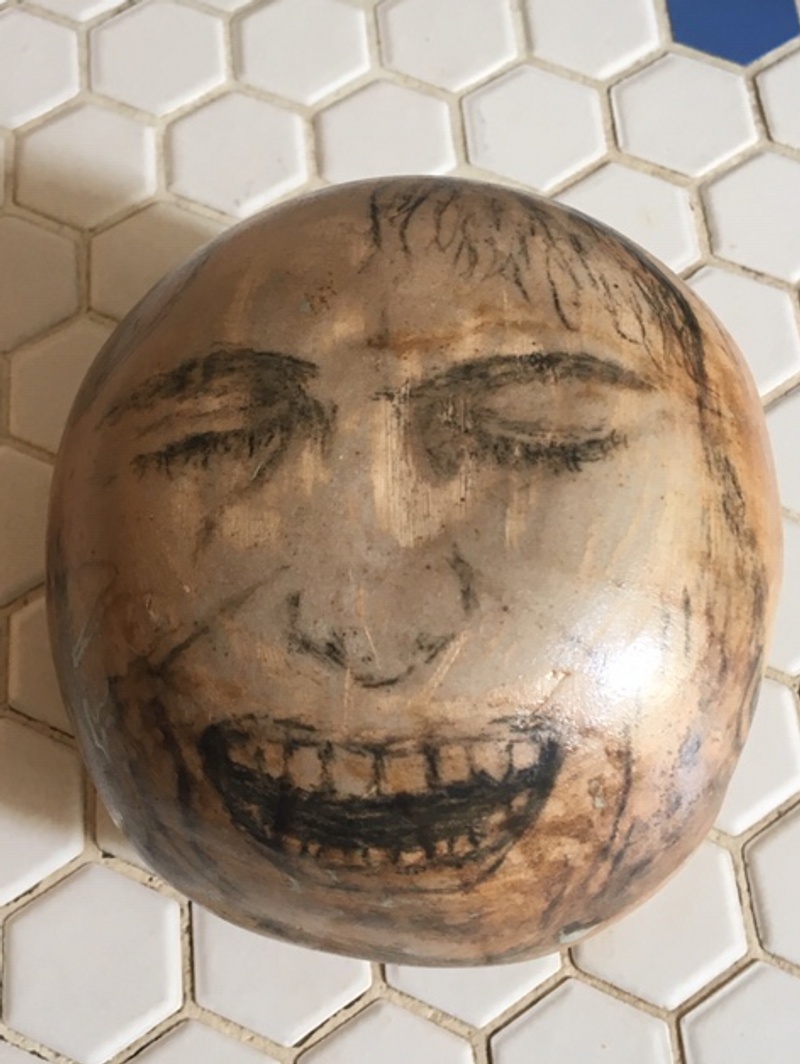
I don’t know what comparisons can be drawn between ceramics and writing, except I have a way of doing things like anyone else. I probably chop onions the way I write prose: enameled surface, distraction below? In terms of process, I go from one thing to the next rather quickly. Writing a few sentences or making a note, making a pie crust, reading a few pages, working on a blurb, washing the bathtub. Sometimes I go to the studio to trim one pot. Which is where I’m going right now…
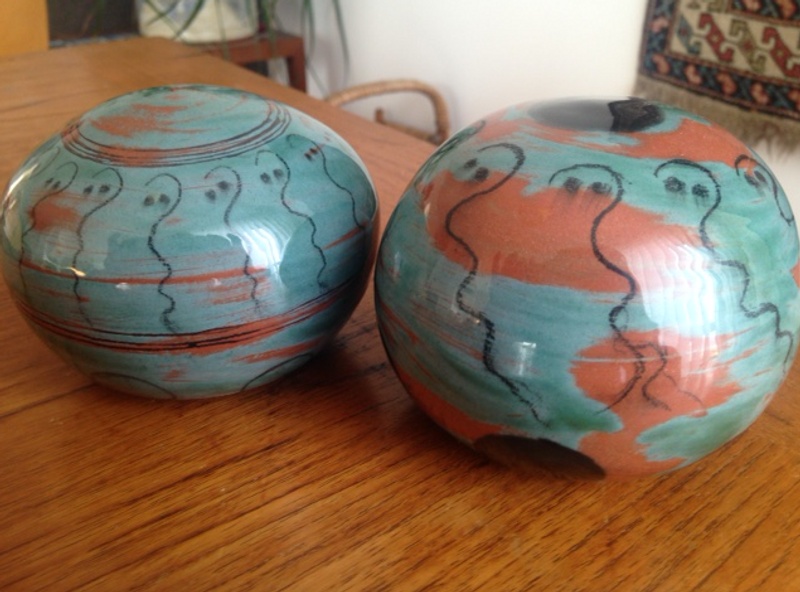
Ceramics and writing are expressions of my particular lyricism and relation to form, I suppose. I think of the novels as spherical, and they end with images of spinning and revolving. I’ve been writing About Ed for ages, a novel about a lover who died in 1994. I think there is something haunted about my ceramics, too. The rattles summon and ward off. The spinning mud is our little planet with its blue atmosphere. I use slip instead of glaze, almost always blue, keeping to the essentials of earth and sky, brown and blue. Because it’s more a hobby, I allow myself an extravagant cosmic feeling of spinning dirt and fire. I say this to discredit myself. Ed often painted sky and clouds, light into gas—perhaps that also figures in.
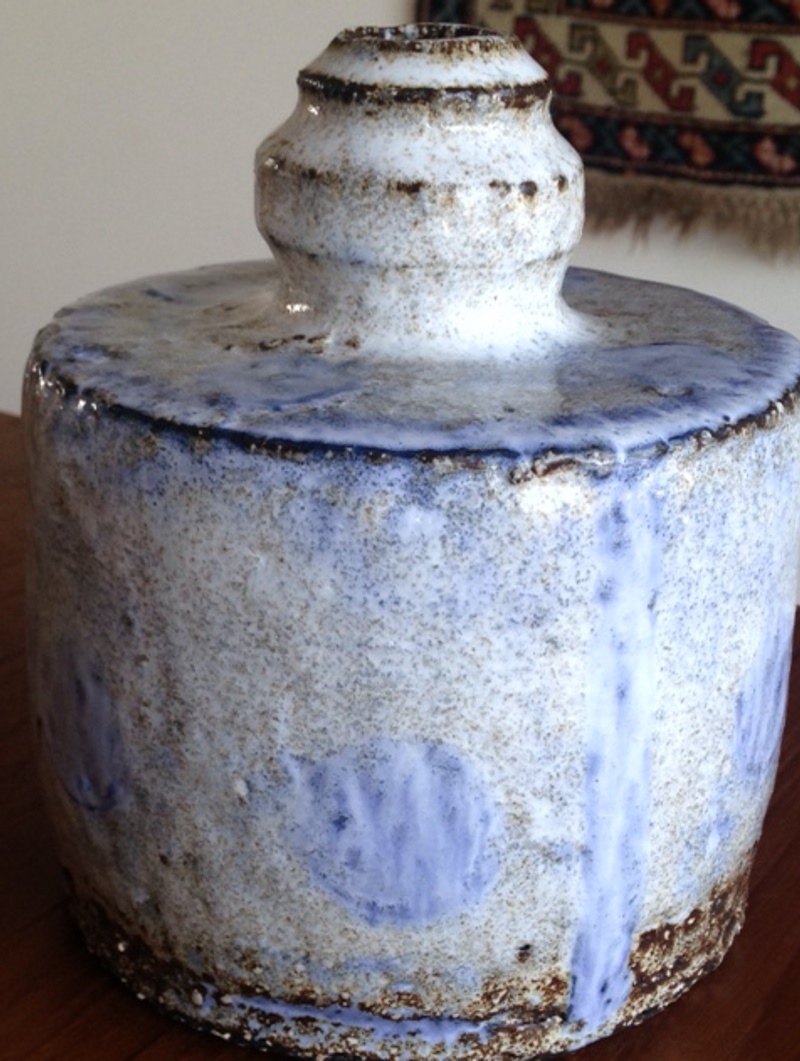
One difference between writing and pottery and cooking is that I am an extremely efficient cook and the opposite is true with ceramics and writing and everything else. I spend hours noodling on one pot while my studio mates make 10 in the same time. I’m usually not interested until I find a way to make things difficult. My ambition in both mediums, in all mediums, exceeds my ability.
I’m glad you brought up Ghost Rattles because I have been thinking a lot about those. In Jack the Modernist, there’s a note at the beginning where you explain that you used to go to bathhouses in San Francisco and that you don’t really do that anymore. Reading Jack the Modernist, and other literature written around the time of the AIDs crisis, in the contemporary moment: people who were once alive and are now dead return to the world of the living; stories like ghost rattles. When I read New Narrative writing, I think a lot about the ways we construct our lives within society. I keep wondering: do you ever feel guilty writing about other people? When you write about a bizarre or risky encounter: “What if someone in my family sees this?” Has anyone that became part of a story approached you in real life and said, “Hey that’s not me!”
In the first place, with Elements, I gave friends the final cut on their characters. I like collaboration, and that worked well until it didn’t, so then I gave friends the option of changing their name if they didn’t like what I’d written, which few friends took. In the case of Jack, I included a chapter in the novel in which we decide on a new name for him. One day the original Jack—Sam—asked with gentle concern if I had entirely forgotten our sex life and the story of our romance. He wondered carefully if my memory was failing. I had indeed spliced another romance into our story and much of the action came from this second source.
There is generally a collaborative ingredient in my books. I asked friends to supply me with observations about their bodies and their relation to death that I inserted into the Medieval lives in Margery. The book collaborates with Margery’s 15th-century book, and the sentence I use is itself a collaboration. Some people accused me of exploiting her. In fact I got hate mail. Her defenders were all men, interestingly.
I also got some grief for the note in Jack you mentioned because it was taken as a prescription. One important reviewer declined the book because of the note, he told me later. But I wanted my book to be understood properly. After knowing about HIV, the meaning of sex in a bathhouse changed, and the novel appeared right at that transition.
Now I am writing about a friend who died of AIDS—Ed Aulerich-Sugai. He died in 1994. I have to think carefully about what constitutes respect and honesty in light of his death. Ed and I lived together as artists in the ’70s, joyously exploiting each other in every possible way. I pillaged his dreams for my poetry. I had sex with a stranger on his studio floor for his erotic drawing commission. Now I am running into those dreams with shocks of recognition because I am reading 25 years of his dream journals for my novel. How much can I alter a dream? Can I change a dream-character’s name for the sake of the book? I am certain Ed would say yes, but that only partly addresses the problem. I suppose it’s a question of authenticity—is it found in the material or the writing?
I’m so interested in the collaborative ingredient you mentioned earlier, because your friends are sharing their authentic thoughts about life and death, with you, and contributing them to a material object that will exist–by design–indefinitely. How did you find your community and how do you maintain it now? What does that activity look like, maybe on a daily basis, when it happens outside systems of the establishment?
My friends’ observations were a language to me, like ideograms; nuggets of bodily experience. By material I meant Ed’s dream journals, which are writing, too. They are challenging and not in a good way. How much can I alter them while still maintaining the integrity of my project? How much can I change them and still present them as Ed’s dreams, and in order to convey Ed’s inner experience? Writing has demands and necessities, and responding to those is also my experience, just to say.
Community is maintained by showing up—attending readings, editing, building relationships, putting energy into the endeavor. It’s that simple. When I was young, I urgently needed to see my image reflected back in the mirror of a community, specifically the Bay Area’s overheated writing world. Now, less so. But my friendships are still drawn from this band of closely related groups in New York and elsewhere. Robert Duncan and Thom Gunn were models for me, that is, models for growing old inside a community. They never stopped making new friends and they never stopped playing. They were generous to younger writers, myself included.
Now, at my time of life, I write more blurbs and letters of support. I edited a sampling of Bay Area writers and artists for Oberon, a journal in Copenhagen, for example. My dear friend Bruce Boone is always embarking on friendships with young poets, and look at Lyn Hejinian, publishing her marvelous Atelos, and Kevin Killian, curating a reading series—and he and Dodie [Bellamy] have revived Mirage.
My favorite part of your essay collection Communal Nude happens in “My Community” when you write: “Any art wants to take the place of your reflection in the mirror and call for your recognition. It makes you become it like a magic spell–with words, images, representations… New form, new content demand a new way of being, a new way of seeing your own life, just as new vocabulary calls forth its meanings in your life.” What’s the most surprising, or maybe magical, thing that you’ve realized along your creative path?
I will relate a few occasions that reset my path. In a story called “Nightflight” in Elements, my first prose book, I appropriated a valentine by Marquis de Sade, Florville and Courval, in which Florville unknowingly fucks her entire family. Florville becomes pregnant along the way, but my character, Felix, is a man. I was stumped. I’d had dreams in which I was pregnant, but I had internalized a rule that prevented me from imagining a pregnant man in the context of my story, and perhaps by that I mean a public context. Then some shame in me gave way and I was allowed to think it. I remember that feeling, like breathing underwater or flying. Once Kathy Acker was asked how she decided what to write about. “I write whatever I want.” Not a simple reply. I thought that each book I put into the world eliminated me from some approval, especially in the form of a job. What hiring committee would choose me? Instead, I got the perfect job, so what is the moral? Write what you want.
Later, I came upon the idea that narrative is the imaginary resolution of real contradictions. A bridge between inner life and politics/history fell into place—I could feel the truth of it. This notion floats through Louis Althusser (ideology), Claude Lévi-Strauss (myth), and Fredric Jameson (narrative). I realized that personality is also the imaginary resolution of real contradictions, so self and story exist on the same fictional plane. It means that I can climb out of the box of psychology when I please. Finally, encountering the work of Georges Bataille changed me profoundly, especially his concept of negative community. He plants a zero at the center, so when community works right, it becomes a way to lose the self, as opposed to merging into a group.
- Name
- Robert Glück
- Vocation
- Poet, Artist
Some Things
Pagination
